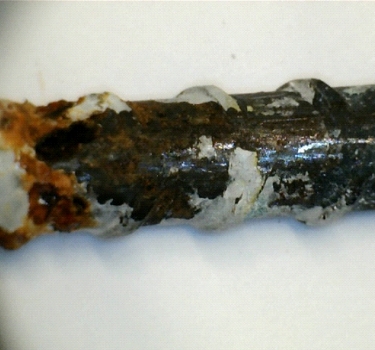Steel corrosion in reinforced alkali-activated materials
DOI:
https://doi.org/10.21809/rilemtechlett.2017.39Keywords:
alkali-activated materials, corrosion, chloride, redox processesAbstract
The development of alkali-activated materials (AAMs) as an alternative to Portland cement (PC) has seen significant progress in the past decades. However, there still remains significant uncertainty regarding their long term performance when used in steel-reinforced structures. The durability of AAMs in such applications depends strongly on the corrosion behaviour of the embedded steel reinforcement, and the experimental data in the literature are limited and in some cases inconsistent. This letter elucidates the role of the chemistry of AAMs on the mechanisms governing passivation and chloride-induced corrosion of the steel reinforcement, to bring a better understanding of the durability of AAM structures exposed to chloride. The corrosion of the steel reinforcement in AAMs differs significantly from observations in PC; the onset of pitting (or the chloride ‘threshold’ value) depends strongly on the alkalinity, and the redox environment, of these binders. Classifications or standards used to assess the severity of steel corrosion in PC appear not to be directly applicable to AAMs due to important differences in pore solution chemistry and phase assemblage.

Downloads
Published
How to Cite
Issue
Section
License
Authors retain copyright of the articles published in RILEM Technical Letters and grant the journal the right of first publication with open access. The work is simultaneously licensed under Creative Commons Attribution 4.0 International License (CC BY 4.0) that allows others to share and adapt the work under the following terms: 1) a proper attribution is given in a form of bibliographic record with the DOI link directing to RILEM Technical Letters; 2) a link to the license is provided; 3) the changes (if any) are indicated.









